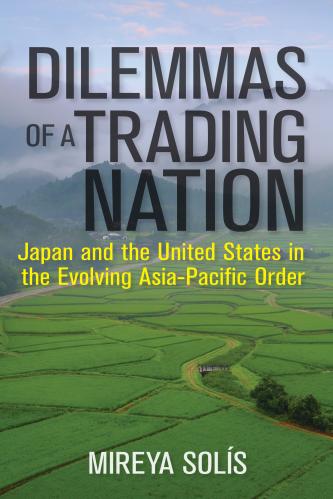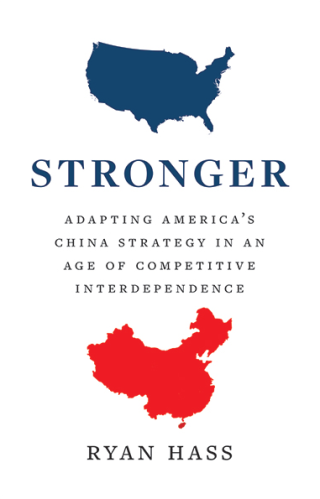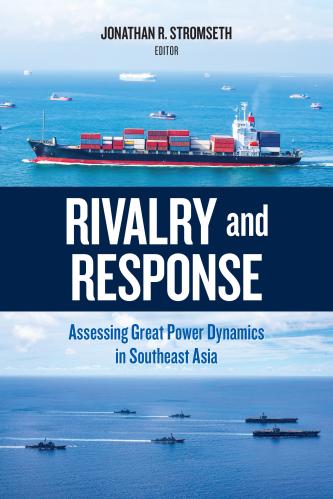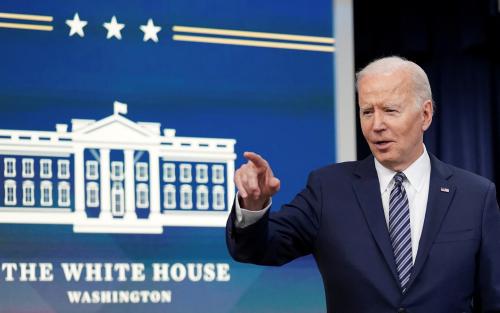U.S. President Joe Biden’s inaugural trip to Asia provides an important milestone to assess the direction and effectiveness of American policy in the Indo-Pacific — a region identified by Republican and Democratic administrations alike as holding a key to American prosperity and security. The Asia tour came on the heels of the president hosting Association of Southeast Asian Nations (ASEAN) leaders in Washington and comprised stops in Seoul and Tokyo for bilateral meetings and participation in the second Quad leaders’ meeting. This full-court diplomatic engagement was crucial, given the importance of the objectives at stake: buttressing the rules-based order across Eurasia; deepening strategic relations with and between the United States’ Asian allies; and launching the economic track of the administration’s Indo-Pacific strategy.
Mission critical for the presidential visit was to reassure the region that the United States will remain committed to its Indo-Pacific tilt, even as it weathers the worst crisis Europe has suffered in seven decades in the wake of Russia’s invasion of Ukraine. In visiting two Asian democratic allies — Japan and South Korea — that have proactively partaken in the economic sanctions campaign to deter and punish Russian aggression, the Biden administration has sent an eloquent message about the indivisibility of the rules-based order. In other words, unchecked military aggression and economic coercion weaken peace and stability everywhere, and the United States is uniquely placed to mobilize allies across Europe and Asia to meet the challenge.
Bilaterals and minilaterals
Biden’s trip was timely as both South Korea and Japan are each expanding their strategic horizons in ways that complement U.S. interests in the region. South Korean President Yoon Suk-yeol, only 11 days in office when he hosted Biden, has vowed to move from the narrower focus of the previous Moon administration on inter-Korean relations to embrace a broader regional and global role for South Korea in technology and supply chains, climate, and health security, and other fields. Yoon’s more skeptical view of China is behind his desire to step up cooperation with the Quad and to coordinate with the United States on economic security measures (investment screening and export controls, among others). Hence, the joint leaders’ announcement highlighted the promise of a comprehensive strategic alliance that leverages the U.S.-South Koreapartnership beyond the Korean Peninsula.
Japan, under Prime Minister Fumio Kishida, has also elevated its diplomatic stature. In responding to the Ukraine crisis, Kishida quickly shelved former prime minister Shinzo Abe’s long-standing policy of engagement with Russia, closed ranks with the G-7 in coordinating the sanctions regime, and stepped up diplomatic contact with the North Atlantic Treaty Organization and the European Union. Earlier this month, the Japanese parliament passed an economic security law to develop and guard emerging technologies and increase resilience of critical infrastructure and supply chains. Concern over China provided once again the backdrop for the rise of defensive economic statecraft in Japan, a key U.S. ally. Biden’s visit is well timed as the Japanese government is debating its future security and defense policy, with plans to release a new national security strategy later this year. Kishida’s party’s support for the acquisition of counter-strike capabilities and plans for larger defense expenditures close to 2% of GDP have not generated public backlash. In fact, Kishida boasts high approval ratings of 61.5% in public opinion polls. A more capable Japan on the defense front was hailed in the Biden-Kishida joint statement as critical to the alliance’s deterrence and response capabilities.
Japan continues to be a strong champion of the Quad. Holding the Tokyo summit immediately after the Australian election has awarded this group of liberal democracies an important opportunity to highlight that minilateral security arrangements in the Indo-Pacific are now more robust and capable of withstanding the leadership transitions that doomed them in the past. Newly elected Australian Prime Minister Anthony Albanese wasted no time to express the support of his Labor government for the Quad and the AUKUS nuclear-powered submarine deal. In Tokyo, the Quad leaders inaugurated an important initiative to boost maritime domain awareness in countries in the region to combat “dark shipping,” a practice which facilitates illegal activities by making vessels largely undetectable.
The Indo-Pacific Economic Framework
Bolstering deterrence against aggression and tapping into the growing strategic ambitions of Asian democratic allies with bilateral and regional meetings were not the only goals of Biden’s inaugural Asia trip. The tour also aimed to revive American economic leadership. With its new economic plan, the Indo-Pacific Economic Framework (IPEF), the Biden team feels confident that it can square the circle: staying true to a worker-centered trade policy that deems tariff reductions harmful to U.S. labor interests, and stepping up to shape the economic integration rules for the most dynamic region in the world. The intent of IPEF is to signal that the United States will not cede the leadership mantle to China and that it has the convening power to offer practical solutions to critical problems such as supply chain bottlenecks, the greening of infrastructure, and the dissemination of digital technologies.
The new framework prizes flexibility and speed of negotiations. Participants can choose from four pillars: resilient trade (standards for the digital economy, the ethical use of AI, labor and environmental standards), supply chain resilience (early warning systems, diversification efforts), climate and infrastructure, and tax policy and anti-corruption measures. IPEF’s debut exceeded expectations by enlisting 12 other countries with robust participation from Southeast Asia (Singapore, Brunei, Malaysia, Thailand, Vietnam, Philippines, and Indonesia), as well as India. Altogether, IPEF countries represent 40% of world GDP.
Headwinds and challenges
While these are all positive trends for U.S. interests in the Indo-Pacific, the headwinds are also strong. Developing Asia is reluctant to condemn Russian aggression and is more focused on food security, oil price hikes, and pandemic recovery. Japan and South Korea have expanded their foreign policy ambitions, but they have yet to demonstrate whether they possess the political will and creativity to repair relations and coordinate on shared interests bilaterally and as a trio with the United States. And while the Biden administration is correctly laser-focused on bolstering cross-strait stability, its messaging on strategic ambiguity is sloppy and it has yet to elevate the economic relationship with Taiwan to the true measure of its potential. In Tokyo, Biden again misstated U.S. policy, since there is no official commitment to the defense of Taiwan and the U.S. failed to extend an invitation for the island to join IPEF.
The hard slog of restoring U.S. economic leadership lies ahead. For there is less than meets the eye in IPEF’s rollout. The IPEF participants agreed only to “launch collective consultations towards future negotiations.” Participants have yet to decide which of the IPEF tracks they will join. The choice itself of a modular approach in IPEF is significant, because it will stand in the way of having consistent adoption of rules across all members. IPEF remains a big question mark: Given its diverse membership, will it be possible to generate ambitious commitments on divisive issues such as data governance and labor standards? Will there be binding obligations or will the framework rest mostly on soft cooperation pledges? Without congressional ratification, can IPEF survive for long in highly polarized U.S. politics?
IPEF is welcomed in the region as a sign of America’s reengagement on economic integration. But leadership requires knowing your followers. The Biden administration has made a bet that it can lead with a different type of economic partnership — one that forgoes binding tariff liberalization — in a region that still sees trade agreements as the currency of economic opportunity and geopolitical clout. Whether America’s wager pays off or not will likely be one of the most significant consequences of Biden’s Asia trip.










Commentary
Will Biden’s Asia trip help the US meet its strategic objectives?
May 24, 2022